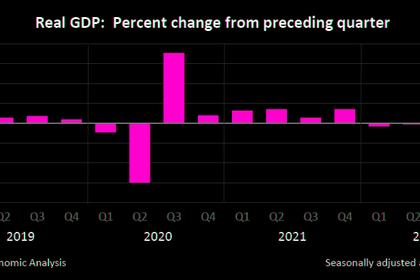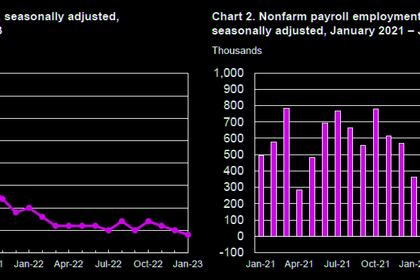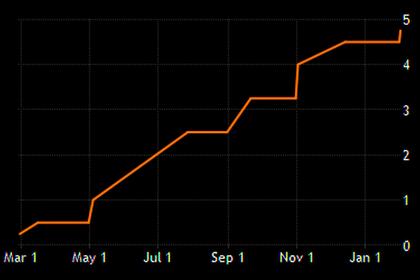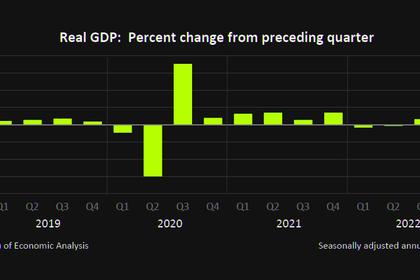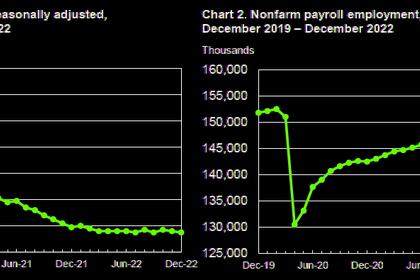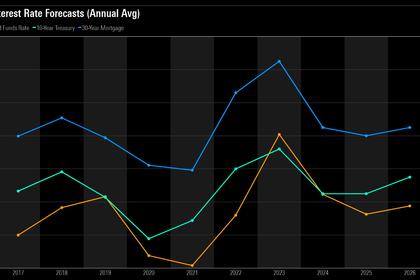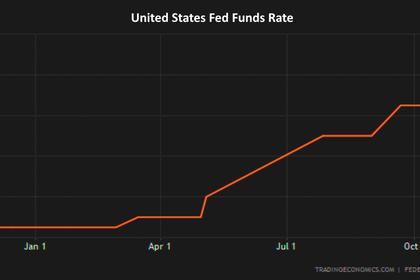
U.S. EMPLOYMENT UP BY 311,000
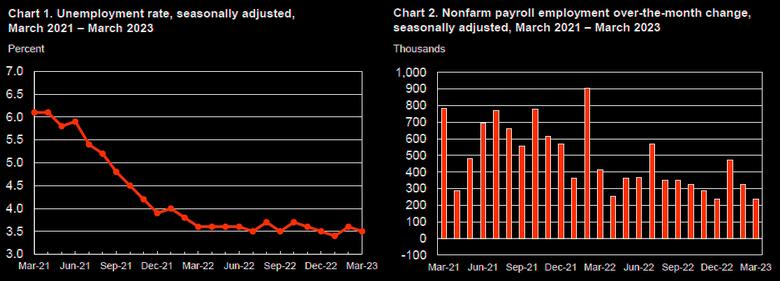
U.S. BLS - April 7, 2023 - THE EMPLOYMENT SITUATION— MARCH 2023
Total nonfarm payroll employment rose by 236,000 in March, and the unemployment rate changed little at 3.5 percent, the U.S. Bureau of Labor Statistics reported today. Employment continued to trend up in leisure and hospitality, government, professional and business services, and health care.
This news release presents statistics from two monthly surveys. The household survey measures labor force status, including unemployment, by demographic characteristics. The establishment survey measures nonfarm employment, hours, and earnings by industry. For more information about the concepts and statistical methodology used in these two surveys, see the Technical Note.
Household Survey Data
Both the unemployment rate, at 3.5 percent, and the number of unemployed persons, at 5.8 million, changed little in March. These measures have shown little net movement since early 2022. (See table A-1.)
Among the major worker groups, the unemployment rate for Hispanics decreased to 4.6 percent in March, essentially offsetting an increase in the prior month. The unemployment rates for adult men (3.4 percent), adult women (3.1 percent), teenagers (9.8 percent), Whites (3.2 percent), Blacks (5.0 percent), and Asians (2.8 percent) showed little or no change over the month. (See tables A-1, A-2, and A-3.)
Among the unemployed, the number of permanent job losers increased by 172,000 to 1.6 million in March, and the number of reentrants to the labor force declined by 182,000 to 1.7 million. (Reentrants are persons who previously worked but were not in the labor force prior to beginning their job search.) (See table A-11.)
The number of long-term unemployed (those jobless for 27 weeks or more) was little changed at 1.1 million in March. These individuals accounted for 18.9 percent of all unemployed persons. (See table A-12.)
The labor force participation rate, at 62.6 percent, continued to trend up in March. The employmentpopulation ratio edged up over the month to 60.4 percent. These measures remain below their prepandemic February 2020 levels (63.3 percent and 61.1 percent, respectively). (See table A-1.)
The number of persons employed part time for economic reasons was essentially unchanged at 4.1 million in March. These individuals, who would have preferred full-time employment, were working part time because their hours had been reduced or they were unable to find full-time jobs. (See table A-8.)
The number of persons not in the labor force who currently want a job was little changed at 4.9 million in March and has returned to its February 2020 level. These individuals were not counted as unemployed because they were not actively looking for work during the 4 weeks preceding the survey or were unavailable to take a job. (See table A-1.)
Among those not in the labor force who wanted a job, the number of persons marginally attached to the labor force was little changed at 1.3 million in March. These individuals wanted and were available for work and had looked for a job sometime in the prior 12 months but had not looked for work in the 4 weeks preceding the survey. The number of discouraged workers, a subset of the marginally attached who believed that no jobs were available for them, also was little changed over the month at 351,000. (See Summary table A.)
Establishment Survey Data
Total nonfarm payroll employment increased by 236,000 in March, compared with the average monthly gain of 334,000 over the prior 6 months. In March, employment continued to trend up in leisure and hospitality, government, professional and business services, and health care. (See table B-1.)
Leisure and hospitality added 72,000 jobs in March, lower than the average monthly gain of 95,000 over the prior 6 months. Most of the job growth occurred in food services and drinking places, where employment rose by 50,000 in March. Employment in leisure and hospitality is below its pre-pandemic February 2020 level by 368,000, or 2.2 percent.
Government employment increased by 47,000 in March, the same as the average monthly gain over the prior 6 months. Overall, employment in government is below its February 2020 level by 314,000, or 1.4 percent.
Employment in professional and business services continued to trend up in March (+39,000), in line with the average monthly growth over the prior 6 months (+34,000). Within the industry, employment in professional, scientific, and technical services continued its upward trend in March (+26,000).
Over the month, health care added 34,000 jobs, lower than the average monthly gain of 54,000 over the prior 6 months. In March, job growth occurred in home health care services (+15,000) and hospitals (+11,000). Employment continued to trend up in nursing and residential care facilities (+8,000).
Employment in social assistance continued to trend up in March (+17,000), in line with the average monthly growth over the prior 6 months (+22,000).
In March, employment in transportation and warehousing changed little (+10,000). Couriers and messengers (+7,000) and air transportation (+6,000) added jobs, while warehousing and storage lost jobs (-12,000). Employment in transportation and warehousing has shown little net change in recent months.
Employment in retail trade changed little in March (-15,000). Job losses in building material and garden equipment and supplies dealers (-9,000) and in furniture, home furnishings, electronics, and appliance retailers (-9,000) were partially offset by a job gain in department stores (+15,000). Retail trade employment is little changed on net over the year.
Employment showed little change over the month in other major industries, including mining, quarrying, and oil and gas extraction; construction; manufacturing; wholesale trade; information; financial activities; and other services.
In March, average hourly earnings for all employees on private nonfarm payrolls rose by 9 cents, or 0.3 percent, to $33.18. Over the past 12 months, average hourly earnings have increased by 4.2 percent. In March, average hourly earnings of private-sector production and nonsupervisory employees rose by 9 cents, or 0.3 percent, to $28.50. (See tables B-3 and B-8.)
The average workweek for all employees on private nonfarm payrolls edged down by 0.1 hour to 34.4 hours in March. In manufacturing, the average workweek was unchanged at 40.3 hours, and overtime remained at 3.0 hours. The average workweek for production and nonsupervisory employees on private nonfarm payrolls was unchanged at 33.9 hours. (See tables B-2 and B-7.)
The change in total nonfarm payroll employment for January was revised down by 32,000, from +504,000 to +472,000, and the change for February was revised up by 15,000, from +311,000 to +326,000. With these revisions, employment in January and February combined is 17,000 lower than previously reported. (Monthly revisions result from additional reports received from businesses and government agencies since the last published estimates and from the recalculation of seasonal factors.)
-----
Earlier:
